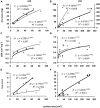New insights into trophic aerenchyma formation strategy in maize (Zea mays L.) organs during sulfate deprivation
- PMID: 25404934
- PMCID: PMC4217348
- DOI: 10.3389/fpls.2014.00581
New insights into trophic aerenchyma formation strategy in maize (Zea mays L.) organs during sulfate deprivation
Abstract
Aerenchyma attributes plant tissues that contain enlarged spaces exceeding those commonly found as intracellular spaces. It is known that sulfur (S) deficiency leads to formation of aerenchyma in maize adventitious roots by lysis of cortical cells. Seven-day-old maize plants were grown in a hydroponics setup for 19 days under S deprivation against full nutrition. At day 17 and 26 from sowing (d10 and d19 of the deprivation, respectively), a detailed analysis of the total sulfur and sulfate allocation among organs as well as a morphometric characterization were performed. Apart from roots, in S-deprived plants aerenchyma formation was additionally found in the second leaf and in the mesocotyl, too. The lamina (LA) of this leaf showed enlarged gas spaces between the intermediate and small vascular bundles by lysis of mesophyll cells and to a greater extent on the d10 compared to d19. Aerenchymatous spaces were mainly distributed along the middle region of leaf axis. At d10, -S leaves invested less dry mass with more surface area, whilst lesser dry mass was invested per unit surface area in -S LAs. In the mesocotyl, aerenchyma was located near the scutelar node, where mesocotyl roots were developing. In -S roots, more dry mass was invested per unit length. Our data suggest that trying to utilize the available scarce sulfur in an optimal way, the S-deprived plant fine tunes the existing roots with the same length or leaves with more surface area per unit of dry mass. Aerenchyma was not found in the scutelar node and the bases of the attached roots. The sheaths, the LAs' bases and the crown did not form aerenchyma. This trophic aerenchyma is a localized one, presumably to support new developing tissues nearby, by induced cell death and recycling of the released material. Reduced sulfur allocation among organs followed that of dry mass in a proportional fashion.
Keywords: aerenchyma; deficiency; leaf; maize; mesocotyl; sulfate deprivation.
Figures






References
-
- Astolfi S., De Biasi M. G., Passera C. (2001). Effects of irradiance-sulfur interactions on enzymes of carbon, nitrogen, and sulfur metabolism in maize plants. Photosynthetica 39 177–181. 10.1023/A:1013762605766 - DOI
-
- Astolfi S., Zuchi S., Passera C., Cesco S. (2003). Does the sulfur assimilation pathway play a role in the response to Fe deficiency in maize (Zea mays L.) plants? J. Plant Nutr. 26 2111–2121. 10.1081/PLN-120024268 - DOI
-
- Bouranis D. L., Chorianopoulou S. N., Bouranis L. D. (2014). A power function based approach for the assessment of the sulfate deprivation impact on nutrient allocation in young maize plants. J. Plant Nutr. 37 704–722. 10.1080/01904167.2013.873455 - DOI
-
- Bouranis D. L., Chorianopoulou S. N., Dionias A., Liakopoulos G., Nikolopoulos D. (in press). Distribution profile of stomatal conductance and its interrelations to transpiration rate and water dynamics in young maize laminas under sulfate deprivation. Plant Biosys.
LinkOut - more resources
Full Text Sources
Other Literature Sources

